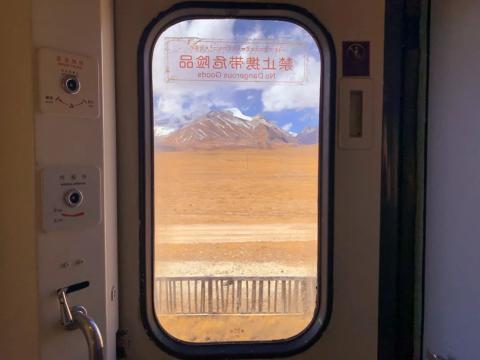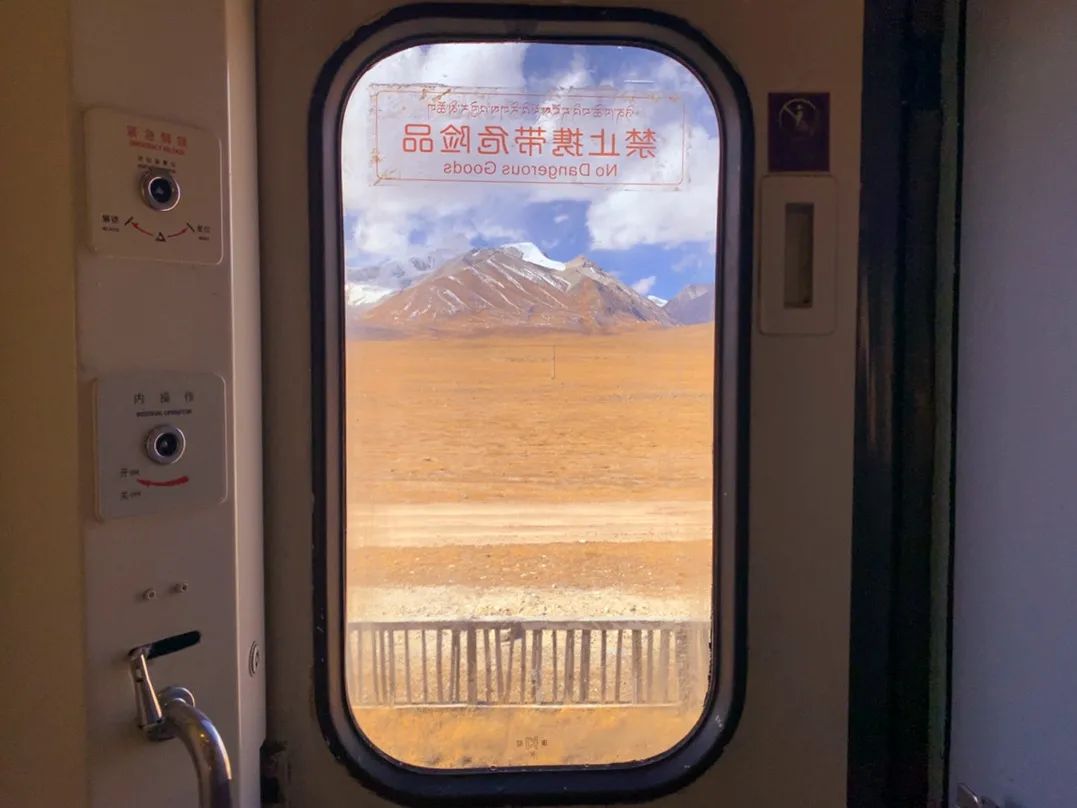
October 25, 2020
The year 2020 is different. The annual trip to Tibetan areas is only possible near the end of 2020.

The Xinjiang-Tibet Line and the Northern Sichuan-Tibet Line in 2019, the Qinghai-Tibet Line, the Southern Sichuan-Tibet Line and the Yunnan-Tibet Line in 2015, plus several self-driving trips in western Sichuan. Footprints have been left in most places in Tibetan areas. Looking back, I always treat Lhasa as an intermediate stop. After a long journey, I arrive in Lhasa. I don’t stay long, just look around and eat, and then leave Lhasa.
In 2020, we plan to make up for this lesson in Lhasa. Lhasa, the central city in the Tibetan area, will become our travel destination. Look carefully and stroll around slowly.
According to a friend who has worked in Lhasa for fifteen years, early autumn in Lhasa, the city of sunshine, is the best season of the year. If you want to go to Lhasa, the best time is before winter. He also enthusiastically helped us arrange accommodation and gave us suggestions. The approximate itinerary.
The season is right, the time is right, and there are many opportunities. Although air tickets are more than half cheaper than train tickets, I still decided to take the long-awaited trip to the Qinghai-Tibet Railway, which has the highest altitude in the world. I was going to Chongqing to transfer to the Lhasa direct train, so I had to praise the waiting function of 12306. I queued up to wait for the Z264 train ticket from Wuchang to Lhasa. Haha, Chongqing food will have to wait. This time, we first took a luxury car worth tens of millions of dollars from Wuchang to Tibet.
October 26, 2020

After the opening of the high-speed rail, I haven't taken a train for more than ten hours in many years. It takes forty hours to get from Wuchang to Lhasa. E-books, power banks, and anti-noise headphones are all fully charged. Bring enough snacks and fruits and get on the bus.
Z264 traveled slowly throughout the day in the northwest, traveling through Shaanxi, Gansu, and Qinghai. The train tour was also quite interesting. The noisy carriages, bluffing passengers, and dining cars decorated in northwest style flashed by from time to time. The view from the car window.
In the evening, in Xining, I transferred to a special plateau train carriage equipped with oxygenation equipment and UV protection. The long train also hung up two locomotives, posing as if they were ready to run desperately. The conductor brought a health commitment form for driving at high altitudes and gave it to passengers to fill out. Some passengers also began to remind each other whether they should drink some legendary anti-high-reaction drugs such as Rhodiola rosea.

Bit by bit, we are reminded: The Qinghai-Tibet Plateau is approaching! On the hundreds of kilometers journey from Xining to Golmud, when we passed Qinghai Lake, the sky was completely dark. The Qinghai-Tibet Railway also passes through Delingha, Qaidam and Qaidam, and various large and small salt lakes. The train passes quietly through the Qaidam Basin, China's cornucopia. Along the way, derricks, towers, and flashing lights are constantly , resource development is in full swing. At around 2 o'clock in the morning, all the passengers in the box got off the bus in Golmud. Haha, with the exclusive box of the plateau train, take out your camera and mobile phone and get ready, the wonderful scenery of the Qinghai-Tibet Railway will begin soon.
October 27, 2020

On the top of the snow-capped mountains, on the Gobi Desert, a lonely roadkeeper pays solemn salute.
The green of the plateau lakes, the Tanggula Pass, the Kunlun Pass, and the Nagqu Grassland are all diverse scenery. Two locomotives braved black smoke and climbed as high as they could. The Qinghai-Tibet Railway, the 109 Qinghai-Tibet Highway, and the Beijing-Tibet Expressway, three modes of transportation that transcended generations, went hand in hand on the snow-covered plateau. It was simply a landscape of transportation development. With huge capital investment and the construction capabilities of the infrastructure madman, the plateau's economic development is showing great vitality.
Passing through Hoh Xil, Cona Lake, Tanggula Mountain, and Nagqu Prairie, we arrived at Lhasa Railway Station smoothly.
The epidemic prevention measures at Lhasa Station are "smart". When passengers get off the train, they first undergo routine temperature checks and green code verification. Then, all the passengers lined up according to their carriage numbers in the main square to feel the strong sunshine in Lhasa. The passengers on the entire train looked like students waiting for the end of school. They stood obediently in front of their own car number plates in the square, quietly waiting for the final inspection and statistical results.
Anti-epidemic doctors and negative pressure ambulances are watching closely. It is conceivable that if someone has abnormal indicators, they must be sent to the ambulance by fully protected staff. The remaining people are expected to enter the isolation area and stay for 14 days. ! Although it was 5pm, under the strong sunshine in Lhasa, the fifteen-minute wait seemed very long. Some passengers whispered that they were sunburned and were not allowed to go.
Finally, the inspection and statistical results came out, confirming that there were no abnormalities among all vehicle personnel, and a vague release order came from the staff's walkie-talkie. With the priority release of all train crew members, the entire train crew was also able to disperse and go their separate ways. This kind of reliable measure to nip abnormal epidemic prevention situations in the bud can only be adopted at stations with small passenger flow. Large stations like Wuchang Railway Station where nearly 10,000 people leave the station at the same time must adopt this method of full verification before release. It is estimated that there is no way to accommodate so many people queuing up from the exit to the platform to get out of school.
Taking bus No. 9 from Lhasa Railway Station is really lively. I saw a Tibetan aunt getting on the bus with two little Tibetan babies who had just finished school from kindergarten. People around her rushed to help and settled the two naughty little guys into their seats. The two children were discussing interesting things in the kindergarten intensely in Tibetan. The little boy's big eyes flickered and he spoke eloquently, and the little girl's pigtails moved up and down with the rhythm of the head-shaking debate. They were lively and cute, and immediately attracted the attention of everyone in the car. When we got off the bus, the Tibetan aunt took care of the two children by herself. She picked up the baby, but the baby rolled off the seat and fell to the floor of the carriage. When the baby rolled over, the people around him immediately became confused and tried to help the aunt with the baby. The two children got off the bus safely. During the whole process, the driver showed no sign of urging. He didn't start the vehicle until adults and children had gotten out of the car and confirmed it was safe.
Whenever an elderly Tibetan man gets on the bus, several passengers around him will greet him or send him off, assuming a posture of being ready to lend a hand. They will not release their alert state until the old man sits on his seat. It not only avoids unnecessary physical contact, but also ensures the safety of the elderly on the rickety bus. A young Tibetan girl refused the kind reminder and shook her head and refused to sit on the seat reserved for the elderly. Another passenger who got on the wrong bus hurriedly reported to the driver that he had boarded the wrong bus. The driver very humanely opened the door in advance to let the passenger get off. Transfer across the road.
On the bus departing from Lhasa Railway Station, I met a young man traveling alone from Guangzhou to Lhasa, and at the same time observed a complete backpacker. Hanging from the bottom of the backpack is the oldest rolled cylindrical moisture-proof floor mat. A Tibetan uncle played scriptures on his mobile phone and read along while shaking his head. People in the carriage turned a blind eye and went up and down happily at each stop.

Overall experience: Let me say one more thing, the friendly atmosphere on the bus is not unique to the No. 9 bus , and come and take the bus to Lhasa West Drepung Monastery on the outskirts, I just got on the bus with my camera on my back, a Tibetan aunt enthusiastically pointed to the empty seat , remind me to sit down quickly . Lhasa buses are not crowded or rushed, and no one eats or drinks on the bus. It is a clean and hygienic environment, and the sun is always shining outside the window. It is a joy to sit on the bus and see all the city scenes in Lhasa. A good choice. The orientation of the room we stayed in was also specially arranged. Open the window and you will see that the Potala Palace is less than 1,000 meters away in a straight line.
The hotel arranged by a friend who has lived in Lhasa for a long time has a very good location. The four-star hardware standard is only the price of an ordinary hotel. The floor heating is available all day long. It is also equipped with oxygen supply equipment, thick carpets, and bathrooms with dry and wet zones. There are not many guests, so it is a quiet place to rest.
The walking distance between the hotel and the Potala Palace is 1,300 meters, the walking distance to Norbulingka is 2,000 meters, and the walking distance to Lalu Wetland is only 200 meters.
Deji North Road, where the hotel is located, is a food street where delicacies from all over the country are concentrated. In order to prevent high fever, according to Zhao Tuan's instructions, when you first arrive in Lhasa, don't run around fast, don't jump around, try not to use oxygen supply equipment, and don't eat or drink too much, especially don't eat spicy food. .
After two days of train fatigue, I went out and found a beef noodle restaurant on the street to eat some Lanzhou beef noodles and pancakes. The service at Jiuding Beef Noodles was very enthusiastic. It cost dozens of yuan, and the waiter kept adding water. Tea and water were provided, and the attentive service created repeat customers. I exchanged some one-yuan notes at the cashier and prepared to take the bus to travel around Lhasa.
(To be continued)
